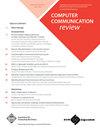Efficacy of Minimal Volume of Articaine Local Anesthetic for Buccal Infiltration During Extraction of Maxillary and Mandibular First and Second Molars: A Prospective Study
IF 2.8
4区 计算机科学
Q3 COMPUTER SCIENCE, INFORMATION SYSTEMS
引用次数: 0
Abstract
Aim: To evaluate the efficacy of minimal volume of articaine buccal infiltration in extraction of maxillary and mandibular first and second molars. Materials and Method: The study was conducted in the Department of Oral and Maxillofacial Surgery at ITS Centre for Dental Studies and Research, Muradnagar, Ghaziabad, Uttar Pradesh, India, from December 2019 to February 2020. A total of 60 patients were included in the study and were divided into two groups as follows: Group 1 patients who were administered articaine infiltration for the extraction of maxillary first and second molars and Group 2 patients who were administered the same local anesthetic for the extraction of mandibular first and second molars. Result: Anesthesia of the posterior maxillary teeth was obtained using 0.5 ml of articaine buccal infiltration alone while the posterior mandibular teeth required a supplemental lingual infiltration in all the cases. Conclusion: 4% articaine buccal infiltration, as low as 0.5 ml provides successful anesthesia for the extraction of maxillary molars. Palatal injection is generally not required. Buccal infiltration of the lower molars using 0.5 ml of 4% articaine could be a good option for extraction of the mandibular posterior teeth, of course, with supplemental lingual anesthesia.最小体积阿替卡因局部麻醉剂对上颌和下颌第一磨牙和第二磨牙拔除过程中颊部浸润的疗效:前瞻性研究
目的:评价最小体积阿替卡因口腔浸润在上颌和下颌第一和第二磨牙拔除中的疗效。材料和方法:该研究于2019年12月至2020年2月在印度北方邦加齐阿巴德Muradnagar ITS牙科研究中心口腔颌面外科进行。共有60名患者被纳入该研究,并被分为两组,如下所示:第1组患者接受阿替卡因浸润以拔除上颌第一磨牙和第二磨牙,第2组患者接受相同的局部麻醉剂以拔除下颌第一磨牙和第一磨牙。结果:在所有病例中,仅使用0.5 ml阿替卡因颊侧浸润即可对上颌后牙进行麻醉,而下颌后牙则需要补充舌侧浸润。结论:4%阿替卡因口腔浸润,低至0.5 ml,可为上颌磨牙拔除提供成功的麻醉。通常不需要进行腭部注射。使用0.5 ml 4%阿替卡因对下臼齿进行颊部浸润可能是拔除下颌后牙的一个不错的选择,当然,在补充舌侧麻醉的情况下。
本文章由计算机程序翻译,如有差异,请以英文原文为准。
求助全文
约1分钟内获得全文
求助全文
来源期刊

ACM Sigcomm Computer Communication Review
工程技术-计算机:信息系统
CiteScore
6.90
自引率
3.60%
发文量
20
审稿时长
4-8 weeks
期刊介绍:
Computer Communication Review (CCR) is an online publication of the ACM Special Interest Group on Data Communication (SIGCOMM) and publishes articles on topics within the SIG''s field of interest. Technical papers accepted to CCR typically report on practical advances or the practical applications of theoretical advances. CCR serves as a forum for interesting and novel ideas at an early stage in their development. The focus is on timely dissemination of new ideas that may help trigger additional investigations. While the innovation and timeliness are the major criteria for its acceptance, technical robustness and readability will also be considered in the review process. We particularly encourage papers with early evaluation or feasibility studies.
 求助内容:
求助内容: 应助结果提醒方式:
应助结果提醒方式:


